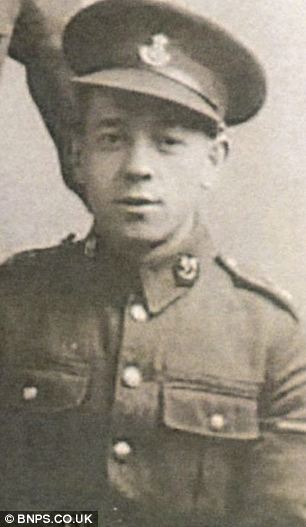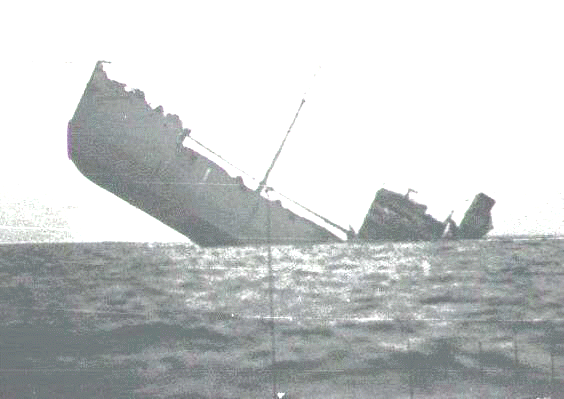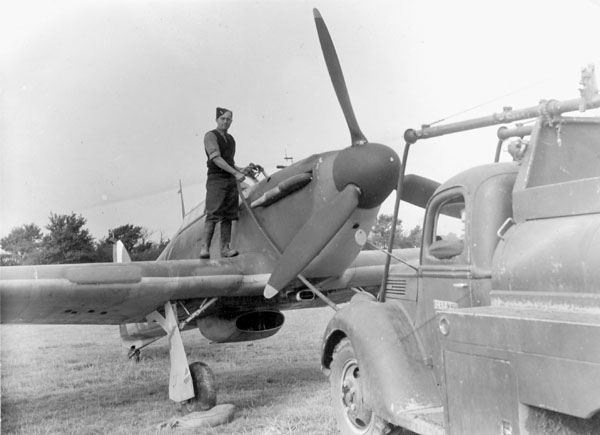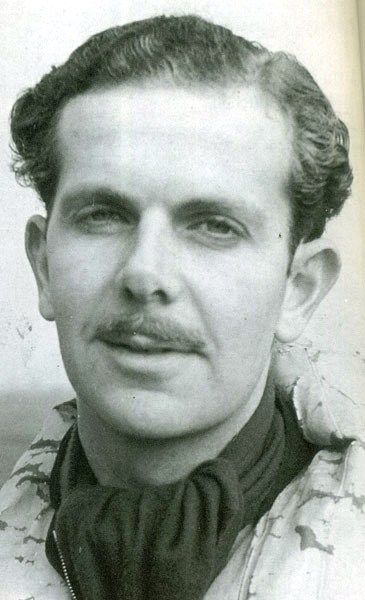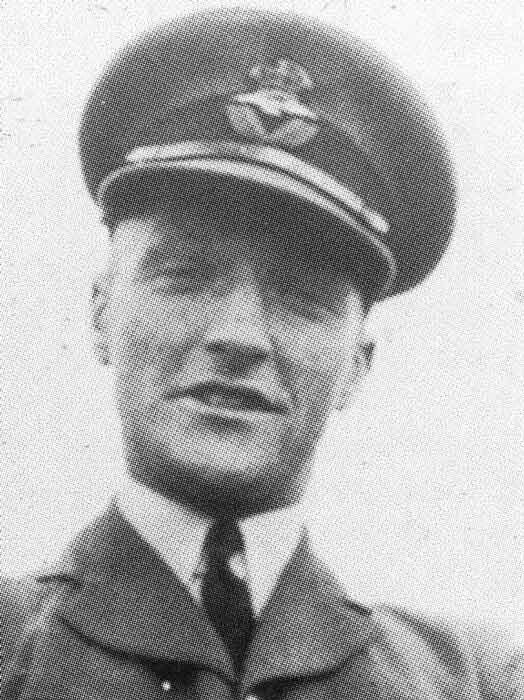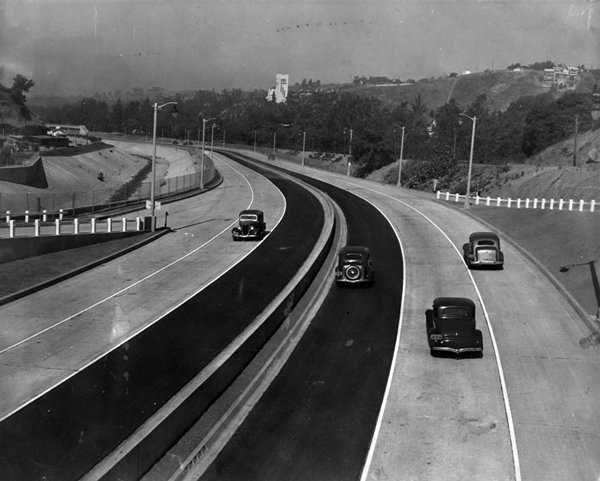Friday 18 October 1940
 |
| Air raid warden Mary Couchman, 24-year-old, shields three little children as bombs fall. October 18, 1940. |
Battle of Britain: Reichsmarschall Hermann Goering, perhaps gilding the lily a bit too much, on 18 October 1940 continues his lavish praise of the Luftwaffe's lackluster campaign during the Battle of Britain. He thanks his pilots for "reducing the British plutocracy to fear and terror." This statement smacks of overkill, but the Luftwaffe's success or failure reflects directly upon him, so the better he makes their failures sound, the better he looks as well.
The fickle weather of 1940 once again puts many flying operations to a stop. The increased strength of the RAF is shown as it successfully prevents the usual reconnaissance flights over England during the morning.
There are no large-scale raids. Instead, there are numerous small-scale intrusions. The largest incident involves some Junkers Ju 88s that Fighter Command intercepts over Kent on the way to London. However, that is the exception.
After dark, the Luftwaffe swings back into action. It bombs London, Bristol, Birmingham, Liverpool, Southampton, and East Anglia. A direct hit on the Rose and Crown Pub results in 42 killed and 6 injured. The night's activity ends early, though, by 01:45, giving Londoners a chance to get some good rest. The Luftwaffe also lays mines in the Thames Estuary.
The Luftwaffe manages to lose 15 planes and the RAF only four. In the foul weather, pilots get disoriented and planes head off in the wrong direction. This happens on both sides. The RAF loses four Hurricanes when RAF No. 302 (Polish) Squadron becomes disoriented over Surrey and runs out of fuel and the planes have to land with dead sticks. This leads to four Hurricanes lost, along with their pilots. The Luftwaffe also has two planes crash back in France, killing the pilots.
There is an exchange of gunfire by the big coastal guns at Hellfire Corner (Straits of Dover), with little consequence.
Major Werner Streib replaces Hptm. Radusch as Gruppenkommandeur of night fighter unit I./NJG 1. Meanwhile, a night fighter Do 17Z-10s of 4./NJG 1 shoots down an RAF Wellington bomber over the Zuider Zee in Holland.
Battle of the Atlantic: Convoys, by and large, and relatively speaking, have been unmolested until now. U-boats have been picking off stragglers and "independents," ships traveling alone. There have been various attacks on convoys, but they have been uncoordinated affairs that have not sunk more than a few ships at a time. That changes today with the first true wolfpack, directed and coordinated by U-boat headquarters in France. This marks a new phase in the naval war.
Half a dozen U-boats have been shadowing Convoy SC 7, which is an eastbound convoy that left Sydney, Nova Scotia on 5 October bound for Liverpool, for several days. SC 7 is composed of 35 ships but has had only a few escorts: destroyer HMS Scarborough, sloop HMS Fowey and corvette HMS Bluebell. Today, a couple of more escorts arrive from Great Britain: sloop HMS Leith and corvette HMS Heartsease. These five escorts, however, are outnumbered by the shadowing U-boats.
U-38 (Kptlt. Heinrich Liebe), operating out of Lorient, starts things off today, already having sunk the Greek freighter Aenos on the 18th. At 02:04, U-38 torpedoes and damages 3670-ton British freighter Carsbreck. The Carsbeck is carrying timber and thus is buoyant, and the ship manages to make port escorted by HMS Heartsease. The Leith and Heartsease attack U-38 without success, and then Heartsease joins Carsbeck as Convoy SC 7 sails on.
U-38, meanwhile, stumbles upon Convoy OB 229 in the same area. It torpedoes and sinks British freighter Sandsend. There are 34 survivors and five crew perish.
Now back down to four escorts, Convoy SC 7 heads into the night knowing it is in trouble. It is about 300 km northwest of Rockall.
Now, with U-38 out of the picture, five U-boats make a joint attack:
U-101 torpedoes and sinks 3913-ton British iron ore cargo ship Creekirk at 21:12. Loaded with 5900 tons of iron ore, it sinks quickly with all 36 men perishing in the dark.
U-101 also torpedoes 4155-ton British freighter Blairsprey at 23:08. With a load of timber, the Blairsprey is buoyant and, while abandoned, remains afloat. Another U-boat, U-100, torpedoes it at 02:50 on the 19th, but that doesn't sink Blairsprey, either. The ship eventually makes the Clyde in tow and is beached, and later repaired.
U-101 also torpedoes 2962 ton British freighter Assyrian (the convoy commodore's ship). The Assyrian is out of formation because earlier it had spotted another U-boat and chased it in order to ram it - unsuccessfully. U-101 sends a torpedo into its starboard side, which puts out its lights and engines but leaves the crew enough time to abandon ship. There are 34 survivors and 17 men perish. Captain Kearon later was awarded Lloyd's War Medal for Bravery at Sea and the OBE.
U-101 had fired four torpedoes in rapid succession, one of which sank the Assyrian. While two miss, another hits and sinks Dutch freighter Soesterberg. There are 19 survivors and 6 men perish.
U-99, led by legendary captain Kretschmer on his fifth patrol, has an epic night. It sinks in rapid succession:
U-123 torpedoes and damages British freighter Skekatika, which has grown tired of the slow pace of Convoy SC 7 and run ahead of it. This is one of those situations where those who figure that the faster ships should just go at their own pace are proven wrong. Skekatika's crew of 36 all survive and are taken on board HMS Fowey.
U-46 torpedoes and sinks 4885-ton British freighter Beatus in Convoy SC 7. All 37 men aboard are rescued.
U-46 also torpedoes and sinks 1996 ton Swedish freighter Convallaria in Convoy SC 7. Everybody aboard survives and is taken on board HMS Fowey.
U-100 torpedoes and damages Dutch freighter Boekelo. U-123 later comes along and finishes her off. All 25 men aboard survive.
U-46 torpedoes and sinks 1572 ton Swedish freighter Gunborg. All 23 men aboard survive and are taken aboard HMS Bluebell.
Just to sum up, the ships lost in Convoy SC 7.
There is also U-boat action elsewhere.
German patrol craft (U-Jäger) UJ 116 and UJ 118 of the 5th German anti-submarine flotilla are operating in the North Sea off Texel when they spot British submarine HMS H49 ((Lt R. E. Coltart). They depth-charge and sink it. There are 21-25 deaths (accounts vary), and only one man, Leading Stoker George William Oliver, survives. He winds up in Marlag M as a POW for the rest of the war. This is a known war grave off Terschelling. Divers visiting it have been prosecuted by the Dutch government.
Royal Navy aircraft carrier HMS Argus sails to Reykavik, Iceland to take aboard planes of RAF No. 701 Squadron.
Royal Navy 448 ton anti-submarine trawler Kingston Cairngorm, in tow since being mined off Portland on the 17th, sinks at 03:18.
The Luftwaffe bombs and damages 159-ton British trawler King Athelstan about 20 km off Mizzen Head.
Royal Navy heavy cruiser HMS Cornwall seizes Vichy French freighter Indochinois off Casablanca. It boards it with a prize crew and sends it to Freetown.
Convoy OA 231 departs from Methil, Convoy SL 52 departs from Freetown.
Royal Navy escort destroyer HMS Exmoor (L 61, Lt. Commander Robert T. Lampard) is commissioned.
Battle of the Mediterranean: General de Gaulle meets with General Catroux. This is a relationship fraught with intrigue because technically Catroux outranks de Gaulle (though technically they both no longer serve in any nation's army). De Gaulle is known to fear that the British will replace him with Catroux. This meeting allays some of de Gaulle's fears on that score, but this will not be the last time that a possible battle for supremacy of the Free France movement arises.
A Royal Navy operation including two Saunders-Roe London Flying boats of RAF 202 Squadron and destroyers HMS Firedrake, HMS Vidette, and HMS Wrestler find Italian submarine Durbo 120 miles east of Gibraltar (off Alboran Island). The British forces torpedo and sink the Italian submarine, with everybody on board surviving. The 48 Italians become POWs (ultimately in the US). This sinking has lasting consequences because, before sinking the sub, Royal Navy sailors get aboard and grab documents that will be helpful in tracking down other submarines.
Royal Navy submarine HMS Regent, having collided with a caique in the Ionian Sea, arrives at Malta for repairs with damage to its forward hydroplanes.
The South African Air Force, based in Sudan, attacks the Italian airfield at Barentu. The RAF attacks various Italian bases, including Benghazi, Sollum, Gura, Diredawa, Rhodes (an airfield) and the Dodecanese Islands.
At Malta, Governor Dobbie responds to a recent memorandum from the Chief of the Imperial Staff which suggested that additional forces need not be stationed on the island to repel an invasion, as forces could be transported in quickly. This degenerates into an argument over tactics - Dobbie wants the ability to attack the landing zones, while the Imperial Staff feels a counter-attack after a four-day delay (the minimum amount of time to bring in new forces) would suffice. Dobbie is probably right because the islands are so small that any delay likely would result in quick defeat.
Battle of the Pacific: US schooner Director II runs aground off Gladstone, Queensland and is lost.
German raiders Orion and Komet, operating in tandem, rendezvous with supply ship Kulmerland at Lamotrek Atoll in the Caroline Islands.
Italian/German Relations: Having made his decision to invade Greece on the 15th, Mussolini has been studiously quiet about it. Italian Foreign Minister Count Ciano has told neither the German ambassador nor his German counterpart. The decision has immense implications for Germany, but Mussolini throughout the war occasionally allows his annoyance at being the junior partner in his relationship with Hitler to manifest itself.
Finally, word starts seeping out today. First, Lt. General Emil (Enno) von Rintelen, Wehrmacht liaison to Rome, tells the OKW that Mussolini has decided to attack Greece on the 26th. In this sense, he is almost acting in the role of a spy, as perhaps the Italian Generals don't even realize this is still top secret information. The information is outdated because army commander Marshal Badoglio already had convinced Mussolini to postpone the attack for two days, until the 28th. However, it is the first information Germany receives about Mussolini's intentions at all.
Then, Ciano sends an odd telegram to German Foreign Minister Ribbentrop stating that army commander Marshal Badoglio had opposed any Greek invasion and even Mussolini had been hesitant. Ciano professes himself enthusiastic about it, which is at odds with his usual attitude toward military entanglements. The telegram does not even say that such an invasion has been planned - it comes out of the blue as if the Germans already should know about the operation. All of this rather casual communication creates an appearance of insincerity or deception, to put it mildly.
All of this information sends the German command at Zossen and the Foreign Ministry into a whirlwind of activity. They contact their agents from Belgrade to Ankara to Tirana to Rome to get confirmation, and General von Pohl (liaison to the Italian Air Force) confirms that he has heard the same thing. Ribbentrop, meanwhile, remains in the dark about the status of the projected Italian operation, as the Italians are being cute about divulging the information.
Italian/German/Greek Relations: Germany and Italy begin ratcheting up pressure on Greece, submitting demands to the Greek government which they do not expect to be met.
Japanese/Dutch Relations: There are reports that the Japanese and the government in the Dutch East Indies in Batavia have reached a "concrete understanding" on oil deliveries to Japan. The actual agreement will be signed on the 19th.
Anglo/Japanese Relations: The British in India suspend indefinitely the export of scrap iron to Japan. This follows upon a similar ban imposed by the United States and appears to be tied to the re-opening of the Burma Road.
US Military: Heavy cruiser USS Louisville arrives in Rio de Janeiro as part of the continuing "Show the flag" operation.
China: The Chinese announce that in the first 18 hours of the re-opening of the Burma Road, more than 1500 tons of cargo have embarked on the long journey from Lashio (the start) to Kunming (the terminus). The truck convoys travel at night and a mile apart to avoid attacks. The trucks are described as "the latest American types."
The Japanese also have noticed the Burma Road's opening, and today the Japanese South China Seas Fleet Command announces that they sent 36 planes to bomb sections of the road (Bunna Road) at and near Kunming. This included a bridge which they "seriously damaged." Naval Air Force Commander Chikao Yamamoto (not the famous Yamamoto), noting bad weather over the target, states:
French Homefront: The Vichy government publishes the new anti-Semitic laws (Statute of 4 Oct 1940) that it has recently announced. This specifies that Jews who are not French citizens are no longer protected by French laws and will be housed in new "Special camps." Now, where could they have gotten that idea?
British Homefront: Another evacuation of London children begins. Some 2000 depart every day for the more rural parts of the country. In fact, many Londoners now are living in caves in Kent. Most, however, have relocated to places such as Reading, Basingstoke, and Oxford.
October 1940
October 2, 1940: Hitler's Polish Plans
October 3, 1940: British Cabinet Shakeup
October 4, 1940: Brenner Pass Meeting
October 5, 1940: Mussolini Alters Strategy
October 6, 1940: Iron Guard Marches
October 7, 1940: McCollum Memo
October 8, 1940: Germans in Romania
October 9, 1940: John Lennon Arrives
October 10, 1940: Führer-Sofortprogramm
October 11, 1940: E-Boats Attack!
October 12, 1940: Sealion Cancelled
October 13, 1940: New World Order
October 14, 1940: Balham Tragedy
October 15, 1940: Mussolini Targets Greece
October 16, 1940: Japanese Seek Oil
October 17, 1940: RAF Shakeup
October 18, 1940: Convoy SC-7 Catastrophe
October 19, 1940: Convoy HX-79 Catastrophe
October 20, 1940: Convoy OB-229 Disaster
October 21, 1940: This Evil Man Hitler
October 22, 1940: Aktion Wagner-Burckel
October 23, 1940: Hitler at Hendaye
October 24, 1940: Hitler and Petain
October 25, 1940: Petain Woos Churchill
October 26, 1940: Empress of Britain Attack
October 27, 1940: Greece Rejects Italian Demands
October 28, 1940: Oxi Day
October 29, 1940: US Draft Begins
October 30, 1940: RAF Area Bombing Authorized
October 31, 1940: End of Battle of Britain
2020
The fickle weather of 1940 once again puts many flying operations to a stop. The increased strength of the RAF is shown as it successfully prevents the usual reconnaissance flights over England during the morning.
There are no large-scale raids. Instead, there are numerous small-scale intrusions. The largest incident involves some Junkers Ju 88s that Fighter Command intercepts over Kent on the way to London. However, that is the exception.
After dark, the Luftwaffe swings back into action. It bombs London, Bristol, Birmingham, Liverpool, Southampton, and East Anglia. A direct hit on the Rose and Crown Pub results in 42 killed and 6 injured. The night's activity ends early, though, by 01:45, giving Londoners a chance to get some good rest. The Luftwaffe also lays mines in the Thames Estuary.
The Luftwaffe manages to lose 15 planes and the RAF only four. In the foul weather, pilots get disoriented and planes head off in the wrong direction. This happens on both sides. The RAF loses four Hurricanes when RAF No. 302 (Polish) Squadron becomes disoriented over Surrey and runs out of fuel and the planes have to land with dead sticks. This leads to four Hurricanes lost, along with their pilots. The Luftwaffe also has two planes crash back in France, killing the pilots.
There is an exchange of gunfire by the big coastal guns at Hellfire Corner (Straits of Dover), with little consequence.
Major Werner Streib replaces Hptm. Radusch as Gruppenkommandeur of night fighter unit I./NJG 1. Meanwhile, a night fighter Do 17Z-10s of 4./NJG 1 shoots down an RAF Wellington bomber over the Zuider Zee in Holland.
Battle of the Atlantic: Convoys, by and large, and relatively speaking, have been unmolested until now. U-boats have been picking off stragglers and "independents," ships traveling alone. There have been various attacks on convoys, but they have been uncoordinated affairs that have not sunk more than a few ships at a time. That changes today with the first true wolfpack, directed and coordinated by U-boat headquarters in France. This marks a new phase in the naval war.
Half a dozen U-boats have been shadowing Convoy SC 7, which is an eastbound convoy that left Sydney, Nova Scotia on 5 October bound for Liverpool, for several days. SC 7 is composed of 35 ships but has had only a few escorts: destroyer HMS Scarborough, sloop HMS Fowey and corvette HMS Bluebell. Today, a couple of more escorts arrive from Great Britain: sloop HMS Leith and corvette HMS Heartsease. These five escorts, however, are outnumbered by the shadowing U-boats.
U-38 (Kptlt. Heinrich Liebe), operating out of Lorient, starts things off today, already having sunk the Greek freighter Aenos on the 18th. At 02:04, U-38 torpedoes and damages 3670-ton British freighter Carsbreck. The Carsbeck is carrying timber and thus is buoyant, and the ship manages to make port escorted by HMS Heartsease. The Leith and Heartsease attack U-38 without success, and then Heartsease joins Carsbeck as Convoy SC 7 sails on.
U-38, meanwhile, stumbles upon Convoy OB 229 in the same area. It torpedoes and sinks British freighter Sandsend. There are 34 survivors and five crew perish.
Now back down to four escorts, Convoy SC 7 heads into the night knowing it is in trouble. It is about 300 km northwest of Rockall.
Now, with U-38 out of the picture, five U-boats make a joint attack:
- U-46 (Oblt.z.S. Peter-Ottmar Grau)
- U-99 (Kplt. Otto Kretschmer)
- U-100 (Kptlt. Joachim Schepke)
- U-101 (Kptlt. Fritz Frauenheim)
- U-123 (Kptlt. Karl-Heinz Moehle)
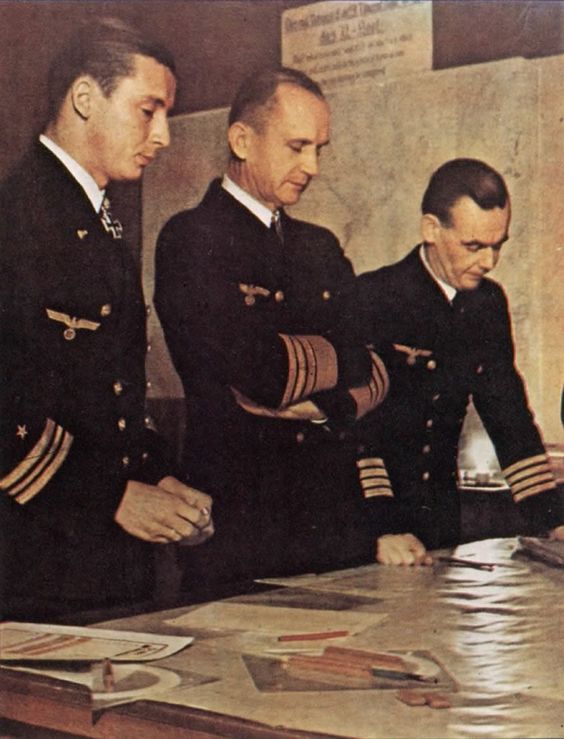 |
| Adalbert Schnee, Karl Dönitz and Eberhard Godt at the Kriegsmarine Headquarters in Berlin, Germany. January 1943. |
U-101 also torpedoes 4155-ton British freighter Blairsprey at 23:08. With a load of timber, the Blairsprey is buoyant and, while abandoned, remains afloat. Another U-boat, U-100, torpedoes it at 02:50 on the 19th, but that doesn't sink Blairsprey, either. The ship eventually makes the Clyde in tow and is beached, and later repaired.
U-101 also torpedoes 2962 ton British freighter Assyrian (the convoy commodore's ship). The Assyrian is out of formation because earlier it had spotted another U-boat and chased it in order to ram it - unsuccessfully. U-101 sends a torpedo into its starboard side, which puts out its lights and engines but leaves the crew enough time to abandon ship. There are 34 survivors and 17 men perish. Captain Kearon later was awarded Lloyd's War Medal for Bravery at Sea and the OBE.
U-101 had fired four torpedoes in rapid succession, one of which sank the Assyrian. While two miss, another hits and sinks Dutch freighter Soesterberg. There are 19 survivors and 6 men perish.
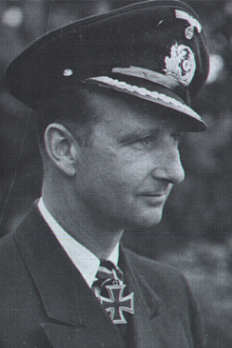 |
| Kptlt. Fritz Frauenheim of U-101. |
- British 6055 ton freighter Empire Miniver (35 survive, 3 dead)
- British 4815 ton freighter Fiscus (38 dead, 1 survivor)
- Greek 3854 ton freighter Niritos (27 survive, one death)
- British 5154 ton freighter Empire Brigade (35 survive, 6 dead)
- Norwegian 1643 ton freighter Snefjeld (all survive)
- Greek 5875 ton freighter Thalia (22 perish, 6 survive)
- British 3106 ton freighter Clintonia (damaged, later sunk by gunfire from U-123) (34 survive, one death).
U-123 torpedoes and damages British freighter Skekatika, which has grown tired of the slow pace of Convoy SC 7 and run ahead of it. This is one of those situations where those who figure that the faster ships should just go at their own pace are proven wrong. Skekatika's crew of 36 all survive and are taken on board HMS Fowey.
U-46 torpedoes and sinks 4885-ton British freighter Beatus in Convoy SC 7. All 37 men aboard are rescued.
U-46 also torpedoes and sinks 1996 ton Swedish freighter Convallaria in Convoy SC 7. Everybody aboard survives and is taken on board HMS Fowey.
U-100 torpedoes and damages Dutch freighter Boekelo. U-123 later comes along and finishes her off. All 25 men aboard survive.
U-46 torpedoes and sinks 1572 ton Swedish freighter Gunborg. All 23 men aboard survive and are taken aboard HMS Bluebell.
 |
| Locations of ships lost in Convoy SC 7. |
- Trevisa (1,813 grt. ca.)
- Languedoc (9,512 grt. br.)
- Scoresby (3,843 grt. br.)
- Aenos (3,554 grt. gr.)
- Beatus (4,885 grt. br.)
- Convallaria (1,996 grt. sw.)
- Creekirk (3,917 grt. br.)
- Empire Miniver (6,055 grt. br.)
- Gunborg (1,572 grt. sw.)
- Niritos (3,854 grt. gr.)
- Fiscus (4,815 grt. br.)
- Assyrian (2,962 grt. br.)
- Soesterberg (1,904 grt. nl.)
- Boekelo (2,118 grt. nl.)
- Empire Brigade (5,154 grt. br.)
- Sedgepool (5,556 grt. br.)
- Thalia (5,875 grt. gr.)
- Snefjeld (1,643 grt. nw.)
- Shekatika (5,458 grt. br.)
- Clintonia (3,106 grt. br.)
There is also U-boat action elsewhere.
German patrol craft (U-Jäger) UJ 116 and UJ 118 of the 5th German anti-submarine flotilla are operating in the North Sea off Texel when they spot British submarine HMS H49 ((Lt R. E. Coltart). They depth-charge and sink it. There are 21-25 deaths (accounts vary), and only one man, Leading Stoker George William Oliver, survives. He winds up in Marlag M as a POW for the rest of the war. This is a known war grave off Terschelling. Divers visiting it have been prosecuted by the Dutch government.
Royal Navy aircraft carrier HMS Argus sails to Reykavik, Iceland to take aboard planes of RAF No. 701 Squadron.
Royal Navy 448 ton anti-submarine trawler Kingston Cairngorm, in tow since being mined off Portland on the 17th, sinks at 03:18.
Royal Navy heavy cruiser HMS Cornwall seizes Vichy French freighter Indochinois off Casablanca. It boards it with a prize crew and sends it to Freetown.
Convoy OA 231 departs from Methil, Convoy SL 52 departs from Freetown.
Royal Navy escort destroyer HMS Exmoor (L 61, Lt. Commander Robert T. Lampard) is commissioned.
Battle of the Mediterranean: General de Gaulle meets with General Catroux. This is a relationship fraught with intrigue because technically Catroux outranks de Gaulle (though technically they both no longer serve in any nation's army). De Gaulle is known to fear that the British will replace him with Catroux. This meeting allays some of de Gaulle's fears on that score, but this will not be the last time that a possible battle for supremacy of the Free France movement arises.
A Royal Navy operation including two Saunders-Roe London Flying boats of RAF 202 Squadron and destroyers HMS Firedrake, HMS Vidette, and HMS Wrestler find Italian submarine Durbo 120 miles east of Gibraltar (off Alboran Island). The British forces torpedo and sink the Italian submarine, with everybody on board surviving. The 48 Italians become POWs (ultimately in the US). This sinking has lasting consequences because, before sinking the sub, Royal Navy sailors get aboard and grab documents that will be helpful in tracking down other submarines.
Royal Navy submarine HMS Regent, having collided with a caique in the Ionian Sea, arrives at Malta for repairs with damage to its forward hydroplanes.
The South African Air Force, based in Sudan, attacks the Italian airfield at Barentu. The RAF attacks various Italian bases, including Benghazi, Sollum, Gura, Diredawa, Rhodes (an airfield) and the Dodecanese Islands.
At Malta, Governor Dobbie responds to a recent memorandum from the Chief of the Imperial Staff which suggested that additional forces need not be stationed on the island to repel an invasion, as forces could be transported in quickly. This degenerates into an argument over tactics - Dobbie wants the ability to attack the landing zones, while the Imperial Staff feels a counter-attack after a four-day delay (the minimum amount of time to bring in new forces) would suffice. Dobbie is probably right because the islands are so small that any delay likely would result in quick defeat.
 |
| North Judah streetcar, San Francisco, California. October 18, 1940. |
German raiders Orion and Komet, operating in tandem, rendezvous with supply ship Kulmerland at Lamotrek Atoll in the Caroline Islands.
Italian/German Relations: Having made his decision to invade Greece on the 15th, Mussolini has been studiously quiet about it. Italian Foreign Minister Count Ciano has told neither the German ambassador nor his German counterpart. The decision has immense implications for Germany, but Mussolini throughout the war occasionally allows his annoyance at being the junior partner in his relationship with Hitler to manifest itself.
Finally, word starts seeping out today. First, Lt. General Emil (Enno) von Rintelen, Wehrmacht liaison to Rome, tells the OKW that Mussolini has decided to attack Greece on the 26th. In this sense, he is almost acting in the role of a spy, as perhaps the Italian Generals don't even realize this is still top secret information. The information is outdated because army commander Marshal Badoglio already had convinced Mussolini to postpone the attack for two days, until the 28th. However, it is the first information Germany receives about Mussolini's intentions at all.
Then, Ciano sends an odd telegram to German Foreign Minister Ribbentrop stating that army commander Marshal Badoglio had opposed any Greek invasion and even Mussolini had been hesitant. Ciano professes himself enthusiastic about it, which is at odds with his usual attitude toward military entanglements. The telegram does not even say that such an invasion has been planned - it comes out of the blue as if the Germans already should know about the operation. All of this rather casual communication creates an appearance of insincerity or deception, to put it mildly.
All of this information sends the German command at Zossen and the Foreign Ministry into a whirlwind of activity. They contact their agents from Belgrade to Ankara to Tirana to Rome to get confirmation, and General von Pohl (liaison to the Italian Air Force) confirms that he has heard the same thing. Ribbentrop, meanwhile, remains in the dark about the status of the projected Italian operation, as the Italians are being cute about divulging the information.
Italian/German/Greek Relations: Germany and Italy begin ratcheting up pressure on Greece, submitting demands to the Greek government which they do not expect to be met.
 |
| The War Illustrated, Vol. 3 No 59, October 18, 1940. |
Anglo/Japanese Relations: The British in India suspend indefinitely the export of scrap iron to Japan. This follows upon a similar ban imposed by the United States and appears to be tied to the re-opening of the Burma Road.
US Military: Heavy cruiser USS Louisville arrives in Rio de Janeiro as part of the continuing "Show the flag" operation.
China: The Chinese announce that in the first 18 hours of the re-opening of the Burma Road, more than 1500 tons of cargo have embarked on the long journey from Lashio (the start) to Kunming (the terminus). The truck convoys travel at night and a mile apart to avoid attacks. The trucks are described as "the latest American types."
The Japanese also have noticed the Burma Road's opening, and today the Japanese South China Seas Fleet Command announces that they sent 36 planes to bomb sections of the road (Bunna Road) at and near Kunming. This included a bridge which they "seriously damaged." Naval Air Force Commander Chikao Yamamoto (not the famous Yamamoto), noting bad weather over the target, states:
Heaven helped us by enabling us to sight and bomb the bridge. We saw no enemy aircraft and no anti-aircraft fire.There is some confusion about how the road will be used; the Colonial Secretary (N.L. Smith) issues, then retracts, a statement that gasoline and some other prohibited items under the July Anglo-Japanese agreement would be sent over the road. The Japanese would not be happy with that, and they retain the ability to pressure the British enclaves in Hong Kong and elsewhere.
French Homefront: The Vichy government publishes the new anti-Semitic laws (Statute of 4 Oct 1940) that it has recently announced. This specifies that Jews who are not French citizens are no longer protected by French laws and will be housed in new "Special camps." Now, where could they have gotten that idea?
British Homefront: Another evacuation of London children begins. Some 2000 depart every day for the more rural parts of the country. In fact, many Londoners now are living in caves in Kent. Most, however, have relocated to places such as Reading, Basingstoke, and Oxford.
 |
| An ad in The Pilot (Vass, N.C.), 18 October 1940. |
October 2, 1940: Hitler's Polish Plans
October 3, 1940: British Cabinet Shakeup
October 4, 1940: Brenner Pass Meeting
October 5, 1940: Mussolini Alters Strategy
October 6, 1940: Iron Guard Marches
October 7, 1940: McCollum Memo
October 8, 1940: Germans in Romania
October 9, 1940: John Lennon Arrives
October 10, 1940: Führer-Sofortprogramm
October 11, 1940: E-Boats Attack!
October 12, 1940: Sealion Cancelled
October 13, 1940: New World Order
October 14, 1940: Balham Tragedy
October 15, 1940: Mussolini Targets Greece
October 16, 1940: Japanese Seek Oil
October 17, 1940: RAF Shakeup
October 18, 1940: Convoy SC-7 Catastrophe
October 19, 1940: Convoy HX-79 Catastrophe
October 20, 1940: Convoy OB-229 Disaster
October 21, 1940: This Evil Man Hitler
October 22, 1940: Aktion Wagner-Burckel
October 23, 1940: Hitler at Hendaye
October 24, 1940: Hitler and Petain
October 25, 1940: Petain Woos Churchill
October 26, 1940: Empress of Britain Attack
October 27, 1940: Greece Rejects Italian Demands
October 28, 1940: Oxi Day
October 29, 1940: US Draft Begins
October 30, 1940: RAF Area Bombing Authorized
October 31, 1940: End of Battle of Britain
2020
